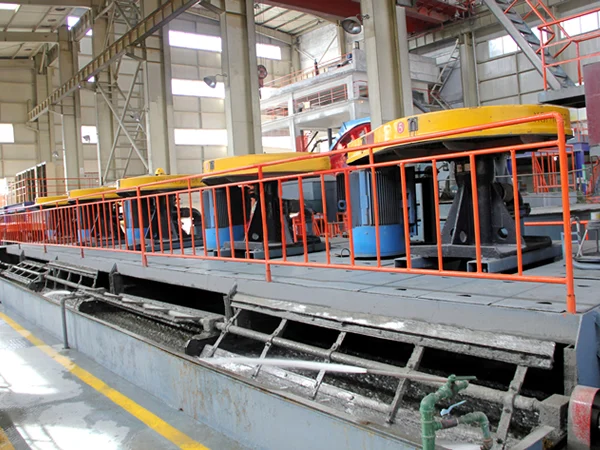
Introduction
In the beneficiation and Smelting processes of non - ferrous metal sulfide ores, Cyanide is often used to increase metal recovery rates. However, the cyanide remaining on the surface of sulfide ores not only has a negative impact on subsequent process flows but also causes serious environmental problems. Therefore, the development of efficient and environmentally friendly methods for removing cyanide on the surface of sulfide ores is of great practical significance.
Current Situation and Hazards of Cyanide Residue on Sulfide Mineral Surfaces
Current Situation
In the traditional flotation process of sulfide ores, cyanide is widely used as an inhibitor. It can selectively inhibit certain unwanted minerals in sulfide ores, thus achieving the separation of target minerals from gangue minerals. But after flotation, a large amount of cyanide will adsorb on the surface of sulfide ores. According to relevant research, in some concentrators, the cyanide content on the surface of sulfide ore concentrates after flotation can be as high as several hundred milligrams per kilogram.
Hazards
From a technological perspective, the remaining cyanide will interfere with the subsequent smelting process. For example, during the smelting of copper sulfide ores, cyanide will form complexes with copper, reducing the smelting efficiency of copper and increasing energy consumption. From an environmental perspective, cyanide is a highly toxic substance. When tailings wastewater containing cyanide is discharged into the natural environment, it will pollute water bodies and soil, endanger aquatic organisms and surrounding vegetation, and even pose a threat to human health through the food chain.
Methods for Removing Cyanide on Sulfide Mineral Surfaces
Oxidation Method
1.Chemical Oxidation Method
Principle: Use strong oxidants to oxidize cyanide into less toxic or non - toxic substances. Common oxidants include hydrogen peroxide (H2O2), sodium hypochlorite (NaClO), etc. Taking hydrogen peroxide as an example, its reaction equation is: (2CN+5H2O2 = 2HCO3 + N2↑+4H2O).
Operation Process: First, place the sulfide ore pulp containing cyanide in a reaction tank and adjust the pH value of the pulp to an appropriate range (generally, for hydrogen peroxide oxidation, the pH value is preferably between 9 - 11). Then, slowly add hydrogen peroxide solution while stirring to make the oxidant fully contact and react with the pulp. The reaction time usually ranges from 1 - 3 hours, and the specific time depends on the cyanide concentration in the pulp and the properties of the ore.
Advantages: The reaction speed is relatively fast, and the removal effect of cyanide is good, which can reduce the cyanide concentration to a relatively low level.
Disadvantages: Oxidants such as hydrogen peroxide are relatively costly, and excessive oxidants may have an impact on subsequent beneficiation or smelting processes.
Adsorption Method
1.Activated Carbon Adsorption Method
Principle: Activated carbon has a large specific surface area and rich pore structures, which can adsorb cyanide on its surface through physical and chemical adsorption.
Operation Process: Add activated carbon to the sulfide ore pulp containing cyanide and stir thoroughly to make the activated carbon fully contact with the cyanide in the pulp. The adsorption time is generally 30 minutes to 2 hours. After adsorption, separate the activated carbon from the pulp by filtration or other means.
Advantages: The operation is simple, and it has a good adsorption effect on low - concentration cyanide. Activated carbon can be regenerated and reused.
Disadvantages: For high - concentration cyanide, the adsorption capacity is limited, and improper treatment of the adsorbed activated carbon will cause secondary pollution.
2.Ion - Exchange Resin Adsorption Method
Principle: Ion - exchange resins contain specific functional groups that can exchange with the ions in cyanide, thereby adsorbing cyanide on the resin.
Operation Process: Load the ion - exchange resin into an exchange column and make the sulfide ore pulp containing cyanide pass through the exchange column. Control the pulp flow rate to ensure that the cyanide fully exchanges with the resin. When the resin is saturated with adsorption, use a specific eluent to elute and regenerate the resin.
Advantages: It has a high adsorption selectivity for cyanide and can achieve continuous operation.
Disadvantages: The cost of the resin is high, the elution process is relatively complex, and cyanide - containing elution waste liquid may be generated.
Other Methods
1.Acid - Base Neutralization Method
Principle: Under certain conditions, cyanide will undergo hydrolysis reactions in acidic or alkaline environments to generate less toxic or non - toxic substances. For example, in an acidic condition, cyanide will react with hydrogen ions to form hydrocyanic acid (HCN), which can be removed by volatilization; in an alkaline condition, cyanide hydrolyzes to form cyanate and other substances.
Operation Process: If acidic hydrolysis is adopted, slowly add acidic solutions such as dilute sulfuric acid to the sulfide ore pulp containing cyanide, adjust the pH value to 2 - 4. and then aerate to volatilize the generated hydrocyanic acid. If alkaline hydrolysis is adopted, add alkaline substances such as sodium hydroxide, adjust the pH value to 10 - 12. and react for a certain period (generally 2 - 4 hours).
Advantages: The cost is relatively low, and the operation is relatively simple.
Disadvantages: The hydrocyanic acid generated during acidic hydrolysis is highly toxic and requires strict protection measures; the alkaline hydrolysis reaction speed is slow, and there may still be a small amount of cyanide residue after treatment.
Process Flow Design for Removing Cyanide on Sulfide Mineral Surfaces
Pretreatment Stage
Pulp Adjustment: Adjust the concentration of the sulfide ore pulp after flotation. Generally, the pulp concentration is controlled between 20% - 40% for subsequent treatment. At the same time, detect the initial cyanide concentration in the pulp to provide a basis for determining subsequent process parameters.
Impurity Removal: Remove large - particle impurities and some suspended solids in the pulp by filtration, sedimentation, etc., to prevent them from interfering with subsequent treatment processes.
Removal Stage
Method Selection: Select an appropriate removal method according to factors such as the cyanide concentration in the pulp, ore properties, treatment cost, and environmental protection requirements. For example, for high - concentration cyanide and cases where cost is not a concern, the chemical Oxidation method can be given priority; for low - concentration cyanide and environmentally - conscious occasions, the biological oxidation method or adsorption method may be more suitable.
Process Parameter Control: Taking hydrogen peroxide oxidation in the Chemical oxidation method as an example, strictly control the amount of hydrogen peroxide added (generally calculated according to the cyanide concentration and reaction equation), reaction temperature (generally 20 - 30℃), pH value (9 - 11), and stirring speed (100 - 300 revolutions per minute) and other parameters to ensure efficient reaction.
Post - treatment Stage
Solid - Liquid Separation: Separate the pulp after cyanide removal by filtration, centrifugation, etc. to obtain purified sulfide ore concentrates and wastewater containing a small amount of cyanide.
Wastewater Treatment: Further treat the separated wastewater to meet national discharge standards. Secondary oxidation, adsorption, and other methods can be used to deeply remove cyanide in the wastewater to ensure safe discharge.
Conclusion
There are various methods for removing cyanide on the surface of sulfide ores, and each method has its own advantages and disadvantages. In practical applications, it is necessary to comprehensively consider factors such as ore properties, cyanide concentration, treatment cost, and environmental protection requirements to select appropriate methods and process flows. With the increasingly stringent environmental protection requirements and the continuous progress of technology, the development of more efficient, environmentally friendly, and low - cost technologies for removing cyanide on the surface of sulfide ores will be the key research direction in the future. Through continuous process optimization, it is expected to achieve zero - discharge of cyanide in the beneficiation and smelting processes of sulfide ores and promote the sustainable development of the non - ferrous metal industry.
- Random Content
- Hot content
- Hot review content
- Chromates / Potassium Dichromate 99.5%
- Industrial concentrated nitric acid 55%-68%
- High-precision Delay Element( 25ms- 10000ms)
- Citric acid-Food Grade
- calcium chloride anhydrous for food
- Pharmaceutical Grade Zinc Acetate
- Calcium Chloride 74% Flakes
- 1Discounted Sodium Cyanide (CAS: 143-33-9) for Mining - High Quality & Competitive Pricing
- 2China's New Regulations on Sodium Cyanide Exports and Guidance for International Buyers
- 3Sodium Cyanide 98% CAS 143-33-9 gold dressing agent Essential for Mining and Chemical Industries
- 4International Cyanide(Sodium cyanide) Management Code - Gold Mine Acceptance Standards
- 5China factory Sulfuric Acid 98%
- 6Anhydrous Oxalic acid 99.6% Industrial Grade
- 7Oxalic acid for mining 99.6%
- 1Sodium Cyanide 98% CAS 143-33-9 gold dressing agent Essential for Mining and Chemical Industries
- 2High Quality 99% Purity of Cyanuric chloride ISO 9001:2005 REACH Verified Producer
- 3Zinc chloride ZnCl2 for High Molecular Weight Polymers Initiator
- 4High Purity · Stable Performance · Higher Recovery — sodium cyanide for modern gold leaching
- 5High Quality Sodium Ferrocyanide / Sodium Hexacyanoferr
- 6Gold Ore Dressing Agent Safe Gold Extracting Agent Replace Sodium Cyanide
- 7Sodium Cyanide 98%+ CAS 143-33-9

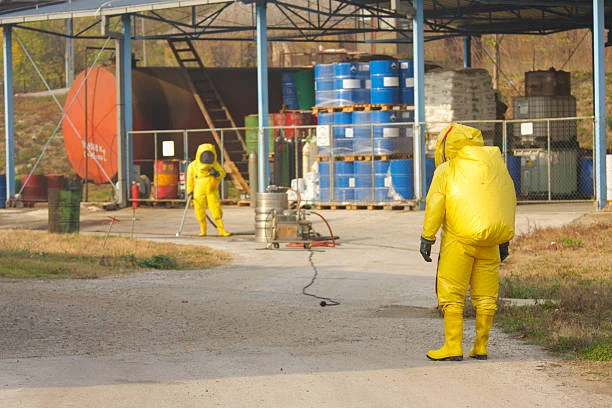
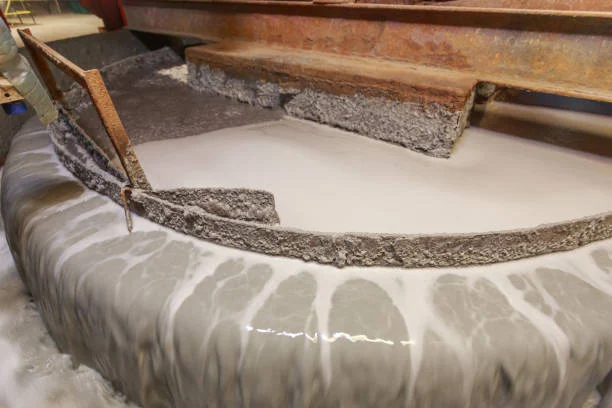
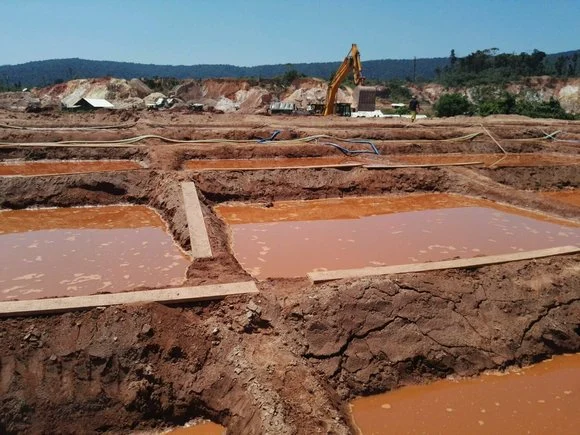


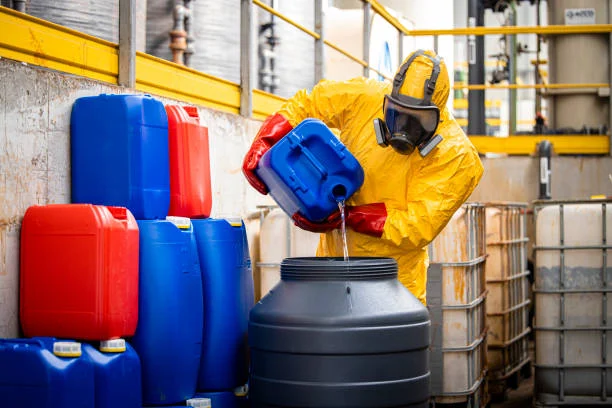
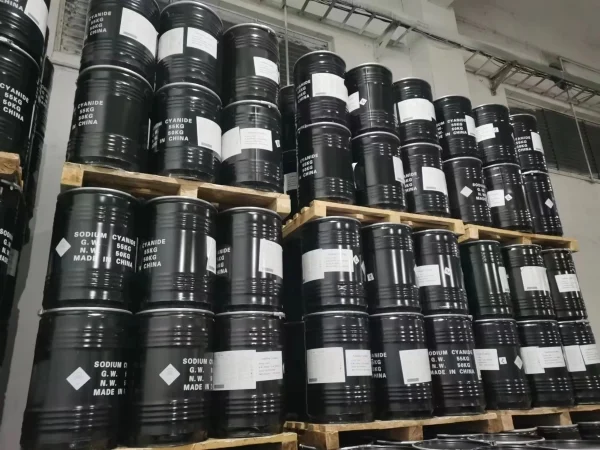



Online message consultation
Add comment: